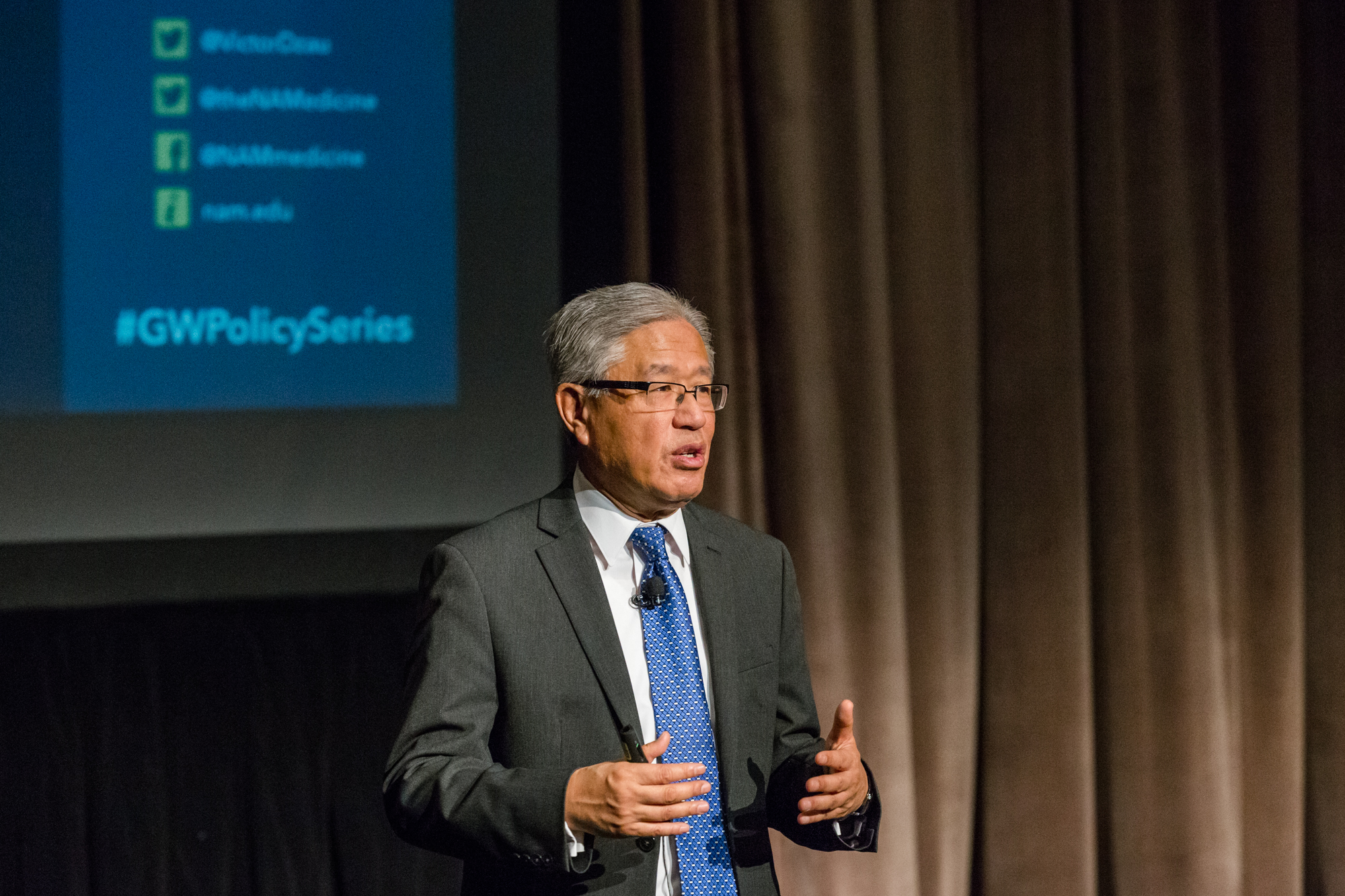Dr. Victor Dzau, president of the National Academy of Medicine, spoke Monday as part of GW Nursing’s ongoing health policy leadership lecture series.
Currently, health and health care is the most prolific area for technology advancement, Dr. Dzau said during a wide-ranging discussion focused on the burgeoning innovation in health care. Despite a political climate focused on cutting research budgets, health care is relatively safe because it is so clearly critical, he said.
Genetic engineering, precision medicine and novel new drugs are just some of the medical breakthroughs Dr. Dzau discussed.
Impactful technologies that will change health care from prevention to care delivery are not relegated to labs and hospitals. Real-time monitoring via a mobile phone is an example of emerging technological advances that are helping patients right in their homes, Dr. Dzau said.
Big data will also have a place in health care, such as assisting with clinical decisions. Dr. Dzau warned, however, that properly recording data is crucial. “If your data is bad, your machine learning tools are useless,” he said.
GW Nursing’s Center for Health Policy and Media Engagement sponsored the lecture and was joined by GW’s School of Medicine and Health Sciences and Milken Institute School of Public Health as co-sponsors.
Dr. Dzau’s talk was the second in this lecture series on health policy issues. U.S. Surgeon General Vice Admiral Jerome M. Adams spoke in October.
Preston Volman, a GW Nursing accelerated BSN student chose to attend Dr. Dzau’s talk despite a “very important” final looming this week.
“I’m only going to get to be a student at GW once, and I want to take advantage of these opportunities,” Mr. Volman said.
Since he holds a degree in biology already, he was familiar with some of the concepts Dr. Dzau mentioned, Mr. Volman said. As a future health care provider, it’s important to continue to develop the language of research and technology.
“As a practitioner, it’s great to see what’s in development now that will help our patients in the future,” he said.


